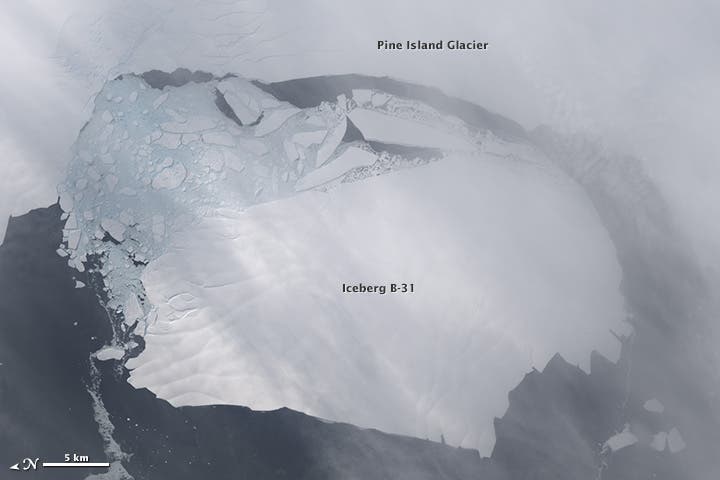- An iceberg the size of Singapore has separated from Antarctica’s Pine Island Glacier
- This kind of detachment is not uncommon, but rarely on this magnitude
- Singapore is an island-city-state, about the size of Budapest or Dubai
Between November 9–11, 2013, a large iceberg finally separated from the calving front of Antarctica’s Pine Island Glacier. Scientists first detected an emerging rift in October 2011, during flights for NASA’s Operation IceBridge. By July 2013, infrared and radar images indicated that the crack dramatically accentuated, and the detachment was imminent.

Named B-31 by the U.S. National Ice Center, the new iceberg is estimated to be 35 kilometers by 20 kilometers (21 by 12 miles), roughly the size of Singapore. If you’re confused by that, keep in mind that Singapore is more or less an island-city-state, about the same size as Budapest or Dubai. Still, the size of the glacier is impressive – to say the least.
“It is hard to predict with certainty where and when these things will drift,” said NASA glaciologist Kelly Brunt. “Icebergs move pretty slowly, and watching this iceberg will be a waiting game.”
Calving of icebergs is not really a rarity; the shelf of Pine Island Glacier has been moving forward at roughly 4 kilometers per year, so the calving was rather expected, but Iceberg B-31 is about 50 percent larger than previous ones in this area. Scientists from NASA believe this was caused by warming seawater under the glacier, and they estimate that the thinning of the ice will continue to think and speed up.
Now, there’s one puzzling question: where will the iceberg go? It’s pretty much impossible to estimate that now, as it depends on the vertical shape and depth of the iceberg, according to NASA scientist emeritus Robert Bindschadler.
“Where it is going depends on the deeper currents into which its keel extends,” he said.
Basically, you have the coastal current and the stronger deeper, cyclonic circumpolar current. If the iceberg is deep enough to be caught by the circumpolar current, it will go one way, but if it is shallow, its movements will be directed by the coastal current.
“If you ever throw a stick into a mountain stream, you would see an erratic flow as it spins, accelerates, and decelerates,” Bindschadler said. “I imagine a similarly variable current field working on the iceberg’s keel. This iceberg is like a very, very big stick.”
Estimating the depth of the iceberg is possible through geophysical methods, but that would be a very expensive and time consuming operation – so researchers will wait and see; but it will be a long waiting game.
“It takes a bit of energy and time to move these guys into the Southern Ocean,” Brunt added. “Many icebergs in Pine Island Bay have persisted for years before exiting, so this could be a long waiting game.”


